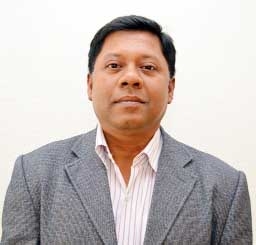
Dr Matiur Rahman :
The World Bank cancelled the Padma Bridge loan agreement on 29 June 2012. Right after that Bangabandhu’s daughter the Prime Minister Sheikh Hasinaexpressed her hard determination to build the Padma Bridge with own finance in the same year, It is undeniable that the Padma Bridge of today’s reality is the absolute embodiment of the firm attitude of the Hon’ble Prime Minister Sheikh Hasina. Ordinary people, like us, do not know on what basis she was able to make such an unprecedented decision.
However, right after the declaration of constructing Padma Bridge with own finance by the Prime Minister, we saw that a selfless student of Bangabandhu’s philosophy of development, renowned researcher Professor AbulBarkat published an in-depth analytical and practical research paper on the Padma Bridge which aroused a great response among the ordinary people at that time.
Regarding this issue, in an interview, Professor AbulBarkat mentioned that as a professional body, Bangladesh Economic Association (BEA) were the first brave people to hold a National Seminar titled ” NijosshoOrthaone Padma Shetu- Jatiyo Oikkyo Sristir Shrestho Sujog” (Padma Bridge with Own Finance: A Great Opportunity for National Unity) on 19 July 2012. That was the moment in history when almost all relevant experts (including all economists) said it was impossible to construct Padma Shetu with ourown funding;instead,nearly all of them argued that it is impossible to have it without the World Bank’s loan. We stood firm and brave with all possible financial and economic estimates and political economy, including the techno-engineering aspects.
He further mentioned that the World Bank, on the plea of ”Conspiracy of Corruption”, cancelled the Padma Shetu loan agreement on 29 June 2012. Among World Bank-financed megaprojects, it was the only one which got cancelled after signing the contract. The reason was simple: The US and the World Bank did not want to see the Awami League in power in 2014. It is a standard ”Regime Change” formula practised by them.
Dr Barkat also stated that he started researching the possibility of having Padma Shetu with our own finances before the World Bank’s termination/cancellation of the contract. He started doing his research on the same starting in December 2011 (6-7 months before the cancellation of the loan agreement).He further mentioned that the reason was straightforward: I just wanted to explore the possibilities of the construction of Padma Shetu without foreign loans. Furthermore,I started collecting all technical, technological, engineering, and financial information as part of that. Finally, in April 2012, I came to a firm conclusion substantiated by empirical evidence that we can have the Padma Shetu with our own finance and management.
He mentioned five clear objectives set in his paper: (1) what should be BEA’s response to the cancellation/termination of the Padma Shetu loan agreement by the World Bank? (2) How logical is the Honourable Prime Minister, Sheikh Hasina’s statement about the construction of the Padma Shetu with our own finances? (3) What could be the self-financing sources, and what amount to be procured from own sources to construct nationally vital Padma Shetu and other megaprojects?(4) What are the possible estimates of income and expenditures of Padma Shetu, including the cash flow analysis, cost-benefit analysis, and debt servicing? (5) What material-physical inputs are necessary to construct the Padma Shetu by procurement sources? (5) What needs to be considered in accelerating the construction of Padma Shetu with our own finances?
He further stated that keeping the above five objectives in mind, my conclusions substantiated by all relevant calculationswere as follows: (1) The cost of Padma Shetu will be BDT 24,000Crore (in 2012 price); (2) It will take 4 years to construct the same, (3) We are in a position to collect fund of at least BDT 98,825 Crore from 14 different sources in 4 years (that would permit construction of 4 Padma Shetu in 4 years); (4) We are in a position to procure at least 50 per cent funds from the interest-free sources; (5) It will take 30 years to replenish/reimburse the cost of construction; (6) From year-11, there will be no need to allocate fund from the ADP (because from the 11th year there will be no deficit); (7) From the 40th year after the opening of Padma Shetu – the net cash flow will exceed BDT 10,000 Crore, and from 100th year the net cash flow will exceed BDT 2,00,000 Crore; (8) Development of connectivity will radically change the economy of not only South-South West Bangladesh but also the economy as a whole.
In addition, he also proposed the following: (1) Institute three high-power committees, of which the highest shall be the Padma Shetu Integrity Committee headed by the Prime Minister (the other two are the Financing Committee and the Engineering-technical Committee) (2) Form ”Padma Shetu Public Limited Company” and release the Initial Public Offering (IPO); (3) Develop an inventory of all relevant Bangladeshi Experts living abroad (update it regularly); (4) Let the own-financed Padma Shetu become a role model of ”Made in Bangladesh”.
It can be said that Padma Bridge is a shining example in this country’s history of political and economic development. Its economic importance is immense. This bridge will serve as a link in the transformation of Bangladesh into a developed country and in enhancing national unity. In this case, the research work by Professor AbulBarkat on “Padma Bridge with own finance: A great opportunity for National Unity” seems to have played a significant role.
(The writer is a researcher and development worker).

